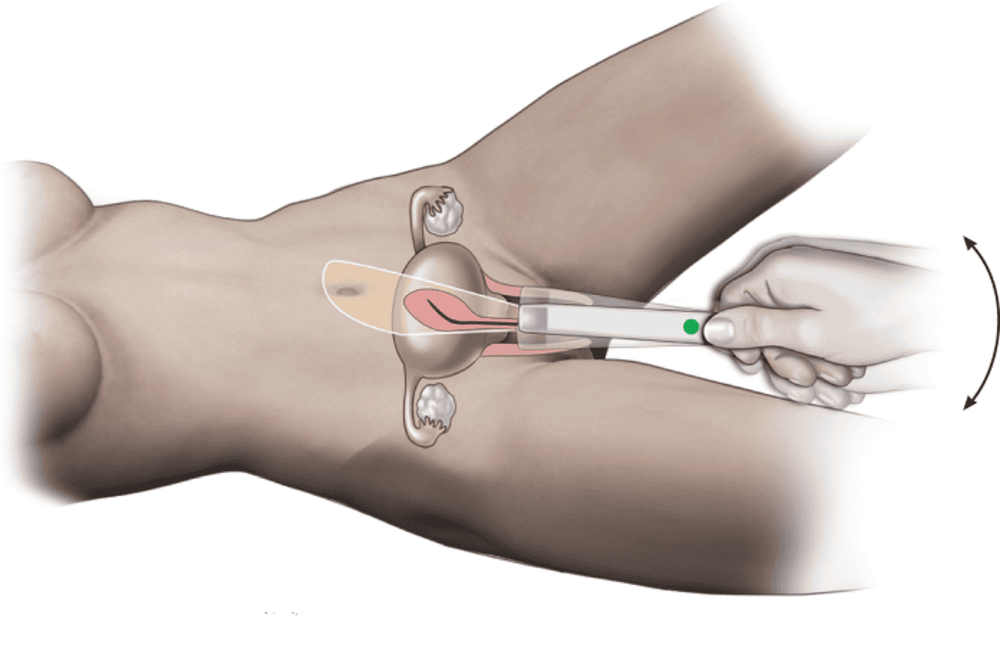This is an automatically translated article.
The article is professionally consulted by Master, Doctor Trinh Thi Phuong Nga - Radiologist - Department of Diagnostic Imaging and Nuclear Medicine - Vinmec Times City International General Hospital.
Currently, general ultrasound is one of the imaging methods widely used in routine health check-ups. Thanks to this method, the diseases and some causes of the disease will be identified, from which the patient will be treated promptly and effectively.
1. What is a general ultrasound?
Ultrasound is an imaging method that exposes a part of the body to high-frequency sound waves (ultrasound waves) to create images of the inside of the body. Ultrasound images are recorded in real time, which can show the structure and movement of parts of the body.
There are new ultrasound methods such as 3-dimensional ultrasound (reconstructing data obtained from sound waves into 3-D images), 4-dimensional ultrasound (3-dimensional ultrasound with motion recording) and Doppler ultrasound (assessment of blood flow in blood vessels).
General ultrasound is the most commonly used diagnostic method today when going for routine or specialized examinations and in hospitalized patients. The purpose of a general ultrasound is to check your health periodically or to evaluate specialized medical conditions.
Ultrasound has the following uses:
● Monitoring the development of the fetus and pregnant women;
● Diagnose many different diseases, access the lesions of diseased organs;
● Help the doctor accurately assess the symptoms of swelling, pain, edema, infection, abscess, ...
● Check the organs in the body, including the heart and blood vessels (aorta). abdomen and major branches), liver, gallbladder, spleen, uterus, ovaries, pancreas, kidney, bladder, fetus, testes, eyes, thyroid, parathyroid glands,...
● Practical guide performing procedures (such as needle biopsies);
● Diagnose heart diseases, investigate damage after a heart attack or other illnesses.

2. General ultrasound procedure
2.1 Preparations ● Patient wears comfortable clothing, may have to remove all clothing and jewelry in the area of the body to be ultrasound;
● When having some types of ultrasound, the patient may be asked not to eat or drink anything for 6 hours before the exam: gallbladder disease....
● With some types of ultrasound , the patient is asked to drink fluids within 2 hours before the exam to have a full bladder.
2.2 Implementation ● The doctor applies a transparent gel to the area of the body to be examined so that the probe comes into contact with the body, preventing air from entering between the transducer and the patient's skin;
● The doctor presses and moves the transducer on the patient's skin, multi-dimensional scanning on the area of the body being examined;
● In some advanced ultrasound techniques, an ultrasound transducer is inserted into the natural openings of the body such as: Transesophageal echocardiography (the transducer is inserted into the esophagus to look at images of the heart), endoscopic ultrasound (the transducer is inserted into the endoscope), transrectal ultrasound (the probe is inserted into the rectum of a male patient to view the prostate), transvaginal ultrasound (head probe inserted into the vagina of a female patient to view the uterus, ovaries, and pelvis).
2.3 Some notes on ultrasound Depending on the type of ultrasound, there will be separate notes. Specifically:
● Ultrasound of the gallbladder: It is recommended to fast for more than 6 hours before the examination because when eating, the gallbladder will shrink, making it difficult to examine and easy to miss small lesions;
● Pelvic ultrasound: An ultrasound that examines the ureters, bladder, uterus, ovaries, prostate gland and pregnancy under 3 months. Patients need to hold urine until they feel full bladder;
● Ultrasound of stomach, pancreas: Patients need to drink water before examination;
Transvaginal ultrasound: Only performed in women who have had sex. The patient needs to urinate completely, the bladder must be empty before the examination;
● General abdominal ultrasound: The last meal before the examination should be light with easily digestible foods, avoid greasy foods or foods that can cause bloating because it will limit the examination process;
● The patient should wear comfortable and loose clothing for the ultrasound.

Most ultrasound methods are non-invasive and painless. This technique is easy, inexpensive, does not use ionizing radiation, so it is not harmful to the patient and can be performed many times. In particular, ultrasound can also show clear images of soft tissues, viscera, blood vessels, nerves .... (often shown not well on X-ray film). Therefore, general ultrasound is a widely used diagnostic imaging technique. Currently, Vinmec International General Hospital is one of the leading prestigious hospitals in the country chosen by a large number of customers for medical examination and treatment, Vinmec uses the most modern generations of color ultrasound machines today. in the examination and treatment of patients. One of them is GE Healthcarecar's Logig E9 ultrasound machine with full options, HD resolution probes for clear images, accurate assessment of lesions. In addition, a team of experienced doctors and nurses will greatly assist in the diagnosis and early detection of abnormal signs of the body in order to provide timely treatment.
Please dial HOTLINE for more information or register for an appointment HERE. Download MyVinmec app to make appointments faster and to manage your bookings easily.














